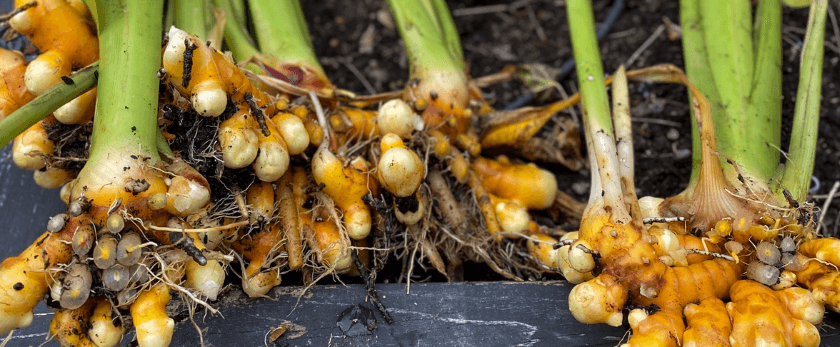Are you looking to add a touch of exotic flavor to your garden? Look no further than turmeric, a vibrant and versatile spice that has been used for centuries in cooking, medicine, and even as a dye. Not only is turmeric a delicious addition to any dish, but it also has numerous health benefits, making it a must-have in any sustainable garden.
In this guide, we will walk you through the steps of growing turmeric in your own backyard, from caring for the plant to common problems and the best time to grow. By the end, you'll be a turmeric-growing pro, ready to add this golden spice to your garden and your life.
How to Care for Turmeric
Turmeric is a tropical plant that thrives in warm and humid conditions. It can be grown both indoors and outdoors, making it a versatile addition to any garden. Here are the key factors to consider when caring for your turmeric plant:
Watering
Turmeric plants require consistent moisture, but not too much. Overwatering can lead to root rot, while under-watering can cause the leaves to wilt and dry out. The best way to water your turmeric plant is to keep the soil consistently moist, but not waterlogged. This can be achieved by watering deeply once or twice a week, depending on the weather and soil conditions.
Light
Turmeric plants prefer bright, indirect light. They can tolerate some direct sunlight, but too much can cause the leaves to burn. If you are growing turmeric indoors, place it near a window that receives plenty of natural light. If growing outdoors, choose a spot that receives partial shade throughout the day.
Soil
Turmeric plants thrive in well-draining, nutrient-rich soil. A mix of potting soil and compost is ideal for growing turmeric in containers. If planting directly in the ground, make sure the soil is loose and well-draining. Avoid heavy clay soils, as they can cause the roots to rot.
Fertilizer
Turmeric plants are heavy feeders and require regular fertilization to thrive. Use a balanced organic fertilizer every two to three weeks during the growing season. You can also add a layer of compost around the base of the plant to provide additional nutrients.
Pruning
Pruning is not necessary for turmeric plants, but it can help promote healthy growth and prevent overcrowding. Remove any dead or damaged leaves and stems to keep the plant looking tidy. You can also trim back any long or leggy stems to encourage bushier growth.
What is the Best Time to Grow Turmeric?
Turmeric is a tropical plant that is sensitive to cold temperatures. It is best to plant turmeric in the spring, after the last frost has passed. If you live in a colder climate, you can start your turmeric indoors and transplant it outside once the weather warms up.
Turmeric takes about 8-10 months to mature, so it is important to plan accordingly. If you live in a region with a shorter growing season, you can start your turmeric indoors in the fall and transplant it outside in the spring.

Common Problems With Growing Turmeric
While turmeric is a relatively easy plant to grow, it can still face some common problems. Here are a few issues you may encounter and how to address them:
Pests
Turmeric plants are generally pest-resistant, but they can still attract aphids, spider mites, and mealybugs. These pests can be controlled by spraying the plant with a mixture of water and neem oil or using an organic insecticidal soap.
Diseases
The most common disease that affects turmeric plants is root rot, which is caused by overwatering. To prevent this, make sure the soil is well-draining and avoid overwatering. If you notice any signs of root rot, such as wilting leaves or a foul smell, remove the affected plant and replant in fresh soil.
Yellowing Leaves
Yellowing leaves can be a sign of nutrient deficiency or overwatering. Make sure to fertilize regularly and adjust your watering schedule accordingly. If the leaves continue to yellow, it may be a sign of a more serious issue, such as a fungal infection or pest infestation.
Sustainable Disposal Methods for Turmeric
As with any plant, it is important to dispose of turmeric in a sustainable manner. Here are a few ways to do so:
- Composting: Turmeric leaves and stems can be added to your compost pile to create nutrient-rich soil for your garden.
- Replanting: If you have a mature turmeric plant, you can replant the rhizomes (roots) to grow new plants.
- Drying: You can also dry the rhizomes and grind them into a powder to use as a spice in cooking.
Avoid throwing turmeric plants in the trash, as they can take a long time to decompose in landfills and contribute to greenhouse gas emissions.
In Conclusion
Growing turmeric is a rewarding and sustainable addition to any garden. By following these care tips and being mindful of responsible disposal methods, you can enjoy this versatile spice while also contributing to a greener, more eco-friendly lifestyle. So why not give it a try and add a touch of exotic flavor to your garden today?










